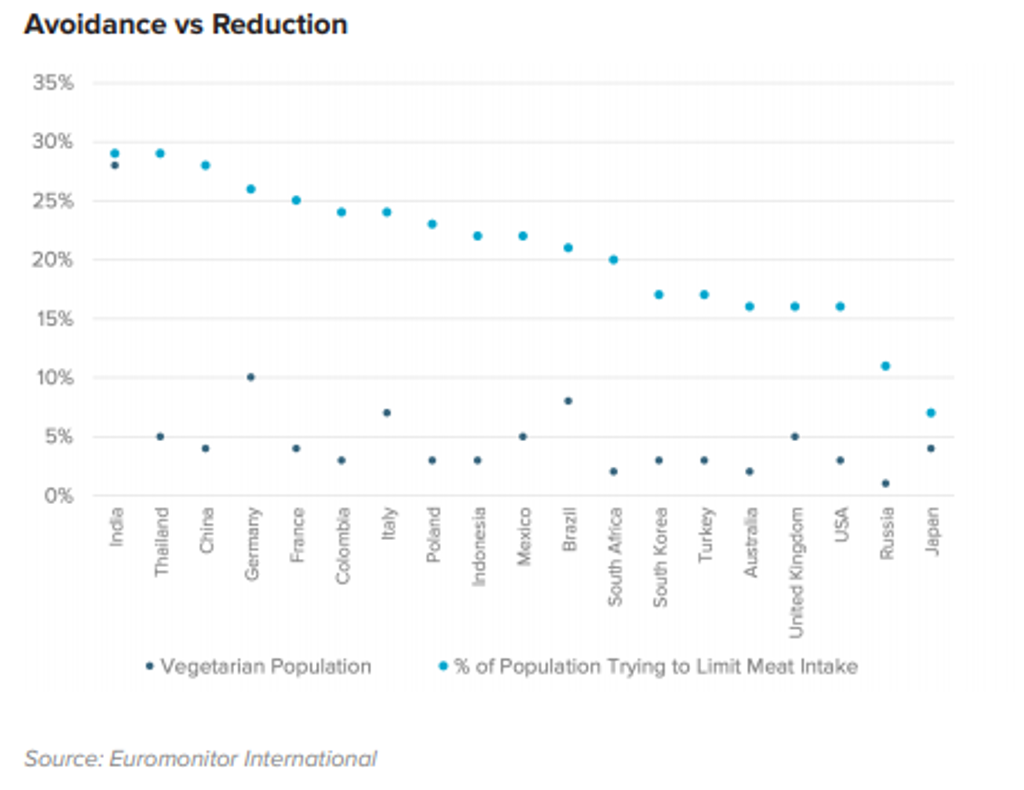Global meat consumption is continuing to rise, despite the trend of plant-based eating increasingly gaining traction in the developed world. Driven by environmental and health concerns, a growing number of “flexitarians” are committing to reducing meat intake while increasing the plant-based part of their diets.
Amongst alternative protein sources, meat analogues have taken the lead and the prospect of lab-grown meat looms. However, this ‘cultured meat’ faces significant hurdles to overcome such as a high cost and the question of consumer acceptance.
Consumers are not really eating less meat and animal products
At a global level, both fresh and processed meat (as well as dairy products) continue to be consumed at a growing rate. Despite the constant news about “sustainable alternatives” and the rise in interest in vegan cuisine, there is little evidence to suggest that the volume of meat and animal products consumed is declining.
The evidence, however, does show a relatively mixed picture across the globe. Looking at the current and future demand for meat and animal products, two different narratives are emerging. For those living in Europe and North America, meat and animal products consumption is slowing or growing at a reducing rate.
In emerging and developing countries, however, meat and animal products are rapidly replacing other foods as the growing middle classes can now afford what was once a prohibitively expensive food.
In developed countries where consumption levels are already relatively high, demand for meat and animal products has slowed in part because of saturation but also in part because of growing health and environmental awareness.
Growth of meat reduction, rather than growth of meat avoidance
There are 628 million vegetarians in the world with over half stemming from India. Globally the vegetarian population has not grown by more than 1% a year since 2010. In fact, it is shrinking as a share of the total population.
Exploring country-level data shows all countries have a large gap between the population claiming to limit meat intake and the active vegetarian population (with the exception of India).
This has given rise to various terms in the industry, of which “flexitarian” is one, to describe consumers who reduce the amount of meat they eat while increasing the plant-based part of their diets.
The alternative proteins and expected evolution
Having grown from niche alternative to a product for the mainstream, the competitive landscape in the dairy alternatives space has changed quite dramatically with Danone, Coca-Cola and PepsiCo all heavily invested in this category.
Indeed, dairy alternatives have become so significant that some coffee and cereal manufacturers are having to reformulate their products to recreate the desired taste when consumed with “milk”.
Meat analogues are currently the star of the alternative protein show with Beyond Meat, Impossible Foods and a few other high-profile companies generating the majority of headlines.
Technological advances in replicating the texture of meat and improving the taste profile of meat analogues are convincing previous sceptics, and the foodservice channel is likely to be the dominant source of revenue.
To learn more about the evolution of plant-based eating download our white paper Evolving Trends in Food and Nutrition


